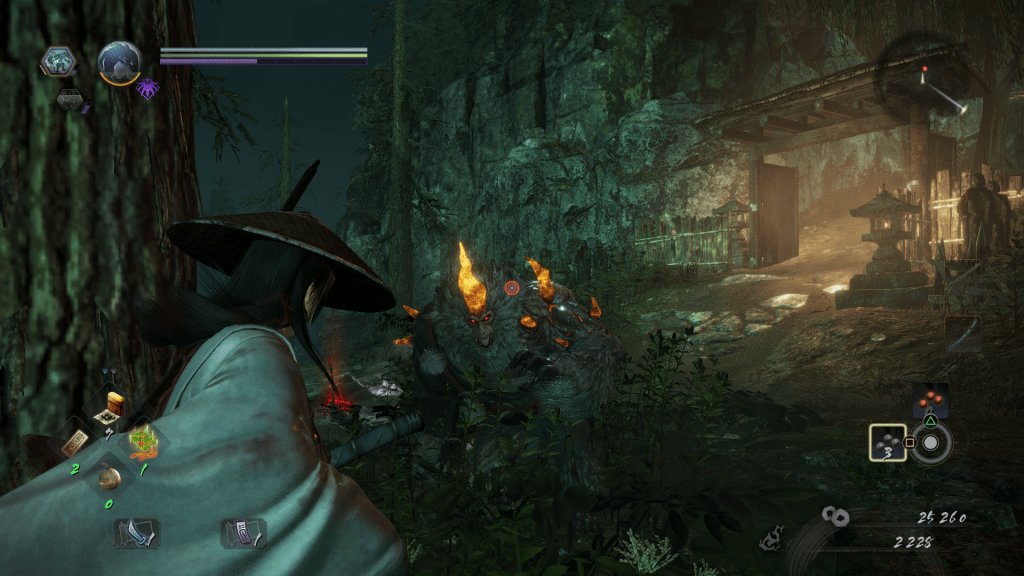
Once you get the hang of it though, the combat becomes a lot more involved, as you’re no longer wasting a bunch of time waiting for you Ki to recover – something a lot of other Souls-like games fall victim to.

I mean, you have to time these Ki pulses while in-combat with things going on everywhere. It sounds simple, but it was actually the single hardest thing for me to grasp when I was getting into the game.

In short, a Ki pulse allows you to recover some Ki after each and every attack you do simply by hitting a button at the right time. Even then though, there’s a lot of movement and very little downtime, especially because there’s neat little mechanic called Ki pulsing.

This allows you to straight-up facetank enemies if you have enough Ki and is essential if you’re going to be using a slower weapon like I did. It negates ALL physical damage, whether that be a quick stab or some giant hammer strike, all at the expense of some Ki (your stamina meter). Part of what allowed me to do this was the game’s block mechanic, which I was a huge fan of. I personally went through the entire game mostly using a giant axe, which is quite a bit slower than the other weapons, but you would find me dashing all over the place and even wailing on enemies to break their guard. For a lot of the fights, especially bosses, I found myself leaning into the screen and really getting into the combat – oftentimes being very vocal about it despite no one listening.Īt the same time though, this isn’t another one of those “dodge, attack, dodge, parry simulators,” it has a bit more of an action focus and the combat is generally fast-paced even when using heavier weapons.

You’re not just cutting down paper here, you really get a feel for the combat through the visual and audio feedback – it has a nice sense of meat to it. It has that perfect blend of depth, difficulty, customization, and impact. Simply put, Nioh 2 has some of the best combat I have ever seen from an action RPG, or really action games in general.



 0 kommentar(er)
0 kommentar(er)
